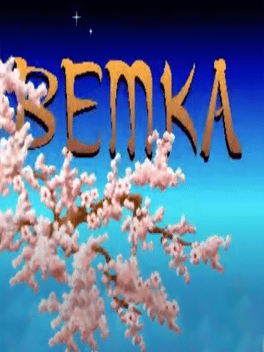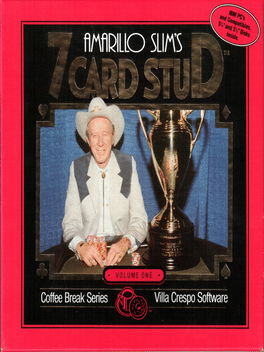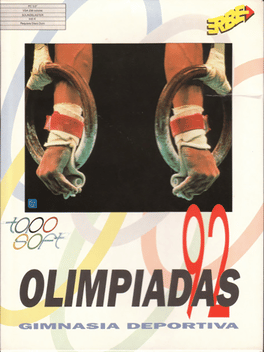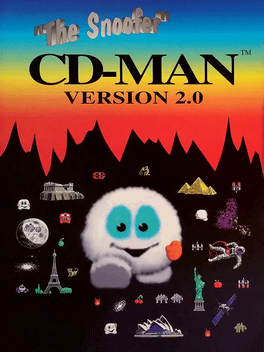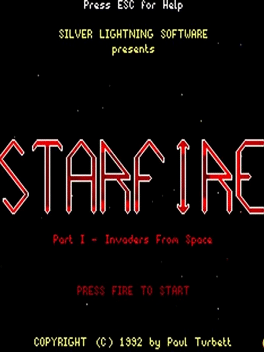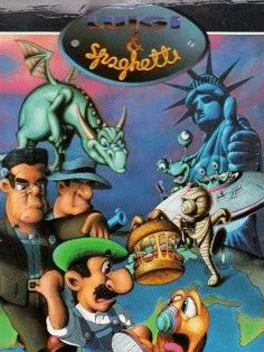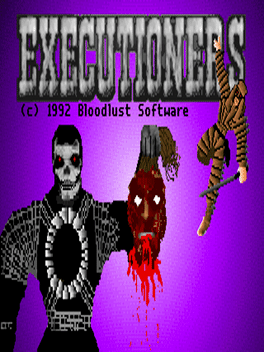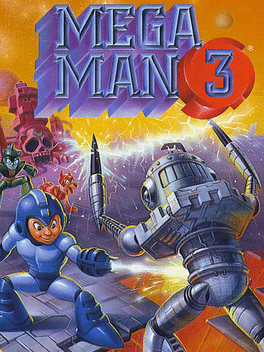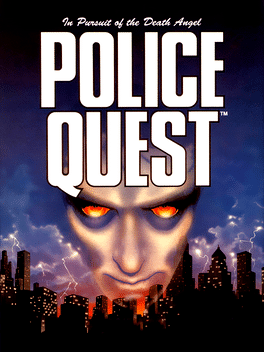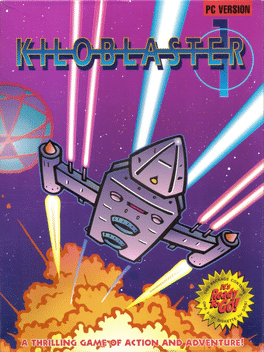New Dos Games - Page 41
-
Vetka
1992
-
Amarillo Slim's 7 Card Stud
1992
The game is a poker simulation featuring only one kind of variety: 7 Card Stud. You can play against two to seven computer opponents chosen out of fifteen different personalities and even with digitized voices. -
Snake Battle
1992
Snake Battle
1992
Snake Battle is a programming game where the player trains his own snake to participate in the snake battle matches. Each snake can have own color, programmed AI, and it is password-protected. Training is concluded in pre-defining the nine schemes of possible snake behaviours on the battlefield. The player does not control the snake directly. Each match requires up to four snakes on the battlefield, and the goal of each snake is to eat the tail of another snake. With each eaten tail the snake is increased, and the snake without tail is reduced. The winner of the match is a snake with a greater length. The game was released only in Russia. -
Olimpiadas 92: Gimnasia Deportiva
1992
"Olimpiadas 92: Gimnasia Deportiva" is a control-innovative game grouping the most popular events of the Gymnastic discipline in the Olympic Games of Barcelona '92. The game was released only in Spain. -
21 Gewinnt
1992
21 Gewinnt
1992
21 Gewinnt is a German shareware gambling game. The rules are similar to the card game Blackjack but instead of cards, you use dice. Playing against the computer you throw two dice and add their values. After every throw you can either throw again or let your opponent try his luck. You win by achieving 21, when the computer busts (reaching more than 21) or when you are nearer to 21 then he is. In the shareware version you can only play against the computer. By registering you are able to play with one of your friends. -
CD-Man Version 2.0
1992
CD-Man Version 2.0
1992
CD-Man 2.0 has a few changes from 1.0 release where most notably replacing CD-Man with 'the Snoofer'. -
Starfire
1992
-
Snake Game
1992
-
Cyberchess
1992
Cyberchess
1992
A chess game with cyber-/Tron-like theme. The layout of the board has been modified to have pieces rest on intersections instead of squares, but the gameplay is identical to chess. -
Snoopy's Game Club
1992
Snoopy's Game Club
1992
Snoopy's Game Club is a PC/Macintosh Disk Rom game released in 1992 by Accolade. The game features many educational games, for children aged three to eight-years old. -
Luigi & Spaghetti
1992
Luigi & Spaghetti
1992
A Luigi & Spaghetti is a 1992 platformer by Topo Soft. Players control Luigi and his pet worm, Spaghetti, on a quest to rescue heroes who have been captured by aliens. The game combines platforming with simple puzzles. -
SimuSex
1992
SimuSex
1992
SimuSex 1.0 is a simplistic sex simulator for DOS made by Erosoft. The few novelties of SimuSex are fluid animation, the fact that it was one of the first virtual girl-programs with more than still graphics and text descriptions, and that it was extremely widespread in many BBSs in the 90s. A copy of SimuSex 2.0 is promised when registering the game. The developers promise MPEG1 SVGA quality digitized video on software, interactive 3D models with toys, digitized sound effects, sort of a mood AI for the girls and a range of other ahead of their time features. The 2.0 version never realized into a real product. -
Objection!
1992
-
Executioners
1992
-
Elifoot 2
1992
-
Mega Man 3: The Robots are Revolting
1992
Mega Man 3: The Robots are Revolting is a game in the original Mega Man series licensed by Capcom USA and developed and published by Hi-Tech Expressions in association with Rozner Labs In 1992 for DOS. It is a sequel to the first Mega Man for DOS, with no Mega Man 2 for DOS in between. -
Police Quest: In Pursuit of the Death Angel
1992
star 6.2This enhanced remake of Police Quest has been completely re-drawn using 256-color VGA graphics. Instead of the text-based interface of the original version, the remake features icons corresponding to the commands Walk, Look, Touch, and Talk for interaction with the game world. The two versions also have some gameplay-related differences. The driving sequences from the original game have been simplified: the player is no longer required to physically navigate the car and input is limited to making the right turns while the car is driven automatically, and occasionally braking at stop signs. The mandatory poker mini-game during the final segment of the game has been made optional. A few puzzles have different solutions, though not all of those are simplified, and in some instances the puzzles have become more complex in the remake. Story-wise, the game remains the same for the most part, but it also includes re-written and additional dialogue not seen in the earlier version. -
Night Raid
1992
Night Raid
1992
Remake of 1982's Paratrooper. The player controls a gun turret at the bottom of the screen. The turret can swivel to cover a large area of the screen, but cannot move from its base. Helicopters fly across the screen at varying heights, dropping paratroopers. The gun may fire multiple shots at once, and the shots may destroy helicopters or shoot paratroopers. Paratroopers may be disintegrated by a direct hit, or their parachutes may be shot, in which case they will plummet to earth (splattering and dying, killing any paratrooper onto whom they fall). Periodically, jets may fly by and drop bombs; the jets and bombs may be shot as well. -
Virus-Farm
1992
Virus-Farm
1992
A text-based BBS-door/DOS game. In it, the players pretend to be viruses trying to take over the system and compete against one another to infect files and spread across the hard drive. -
Kiloblaster
1992
Kiloblaster
1992
New-age Galaxian. Move along in space in your fighter and shoot anything that moves, while collecting power-ups.
